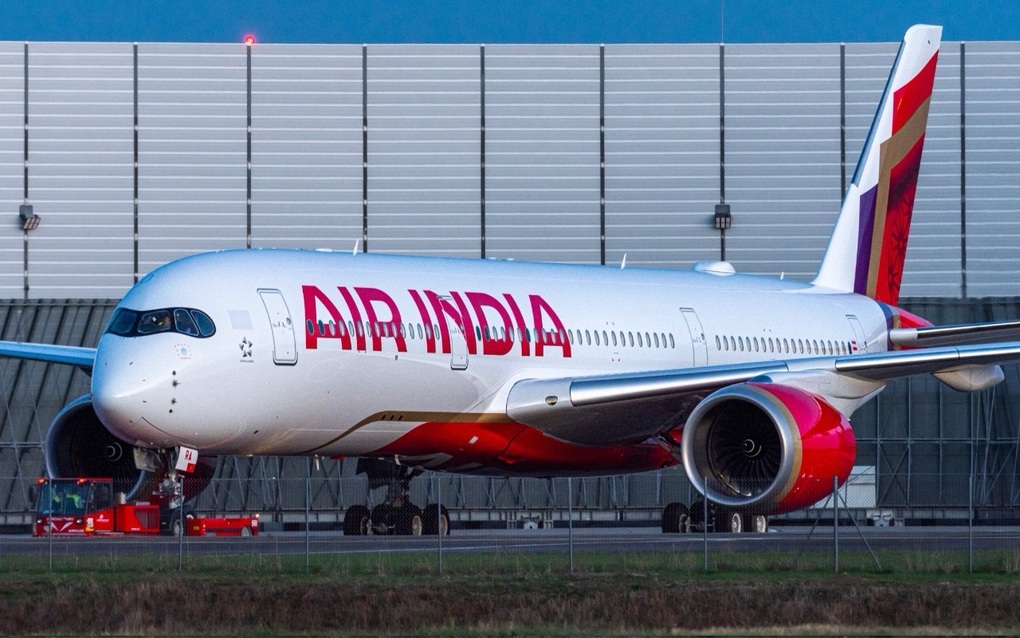According to the Times of India , the incident occurred on the afternoon of July 22. As passengers were leaving the plane after a long flight from Hong Kong to New Delhi, the auxiliary power unit (APU) located at the tail of the plane suddenly caught fire.
Although the fire caused minor damage to the fuselage, all passengers and crew left the plane safely, with no injuries.
“Flight AI 315 from Hong Kong to Delhi on July 22 experienced an APU fire shortly after landing and parked at the gate. The incident occurred when passengers started disembarking. The APU was automatically shut down as per design. Although the aircraft sustained minor damage, all passengers and crew disembarked normally and safely,” an Air India spokesperson said.
The airline also confirmed that the aircraft was grounded pending investigation and that it had fully notified the Civil Aviation Authority of India.
Sources from India Times said that the initial cause could be related to a technical maintenance error, but a thorough investigation is needed to determine the exact cause.

An Air India Airbus (Photo illustration: Contrail).
The APU fire on AI 315 comes amid mounting pressure on Air India over safety incidents. India Times reported that in the past six months alone, the airline has been issued nine notices by Indian authorities for five identified safety violations.
One of the most serious incidents was the tragic air accident on June 12. Air India Flight AI 171, a Boeing 787-8, crashed just minutes after taking off from Ahmedabad airport, killing 241 of the 242 passengers and 19 people on the ground.
According to the preliminary report of the Air Accident Investigation Bureau of India (AAIB), the fuel supply to both engines was cut off within a second, leaving the crew unable to react and leading to the tragedy.
Meanwhile, Air India confirmed that it had checked the entire fuel locking system on Boeing 787 and 737 aircraft and found no abnormalities.
Mr. Murlidhar Mohol, Minister in charge of Civil Aviation, told the Indian Senate that in the last six months, there has been no trend of deterioration in the technical reliability of Air India, especially for the aircraft involved in the accident.
According to the aviation industry website Skybrary , the APU (Auxiliary Power Unit) is a small jet engine, usually installed at the tail tip of an aircraft. The APU can operate independently without the need for ground support equipment such as generators, air conditioners or engine starters.
When activated, the APU provides power to aircraft systems as well as compressed air to start the main engines or air conditioning. In the event of a parked aircraft, the APU typically remains operational to ensure a stable power supply and environment before the end of the flight.
Skybrary also said there have been multiple incidents of APUs catching fire or malfunctioning both while the aircraft was on the ground and in flight.
One notable incident was in June 2016, when the passenger cabin of an Airbus A330 at Heathrow Airport (London, UK) was filled with smoke due to hot oil entering the compressed air system due to a damaged APU seal, requiring an emergency evacuation.
Previously, in July 2013, an Air France Boeing 777-300 at Charles de Gaulle airport (Paris, France) was also forced to evacuate when passengers detected a burning smell and smoke in the cabin, the cause was determined to be an incident related to the APU.
Source: https://dantri.com.vn/du-lich/hang-air-india-lai-gap-su-co-may-bay-cho-170-hanh-khach-boc-chay-20250723123724338.htm



































































































Comment (0)